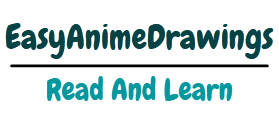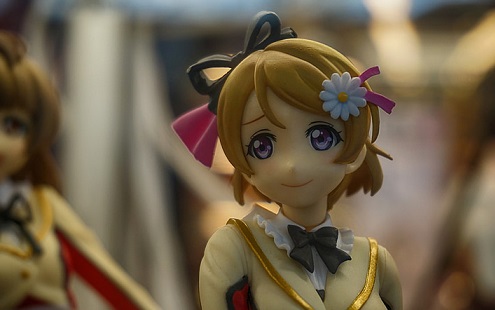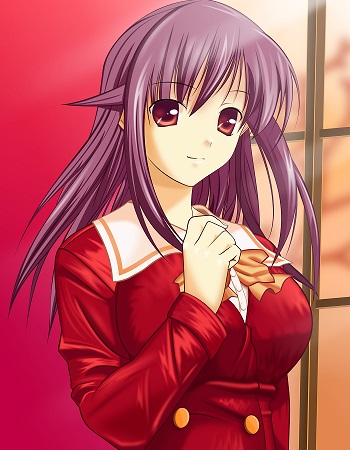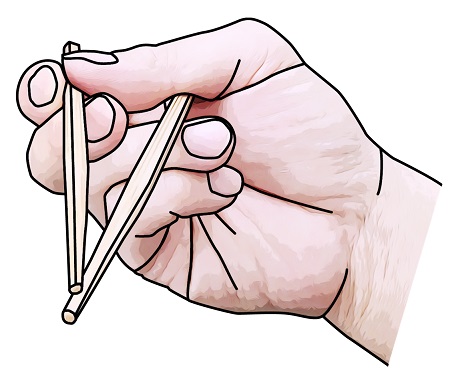How to Draw Anime & Manga Eyes – Side View: A Professional Artist’s Guide
As a professional anime artist with years of experience, I’ve found that mastering the side view of anime eyes is a crucial skill that dramatically elevates character expressiveness. While front-view eyes receive the most attention in tutorials, side-view eyes communicate crucial emotional nuances and directional focus. This comprehensive guide will walk you through my approach to creating expressive, dynamic anime eyes from the side perspective.
Understanding Eye Structure and Movement
Before diving into anime stylization, it’s essential to understand the fundamental structure of real eyes. The eyeball is a spherical object that rotates within its socket.
This rotation is key to creating believable directional gazes:
- When looking upward, the eye rotates up, and the upper eyelid lifts
- When looking downward, the eye rotates down, and the upper eyelid follows
- When eyes close in a relaxed state, the upper eyelid moves downward while the lower eyelid remains relatively stationary
These natural movements form the foundation for anime eye expressions, even though anime style significantly exaggerates eye size and shape.
Positioning Eyes on the Head
For proper side-view eye placement, I divide the head horizontally at approximately the middle. In anime style, eyes typically sit below this centerline, unlike realistic proportions where eyes align directly with it.
When drawing more realistic anime styles, I position the eyes slightly higher on the face, while more stylized characters feature eyes placed lower. This positioning choice significantly impacts your character’s overall aesthetic and perceived age.
Basic Open Anime Eye – Side View
For the standard open anime eye from the side:
- Draw a rounded curve for the upper eyelid
- Place the iris as a partial circle, with the top portion slightly covered by the upper eyelid
- Add a smaller circle within the iris for the pupil
- Draw a subtle lower eyelid curve beneath the iris
- Position the eyebrow slightly above the eye, following a natural arch that reflects the character’s neutral expression
This foundation creates a neutral, alert expression that serves as our baseline for other emotional variations.
Surprised Anime Eye – Side View
Surprise is characterized by widened eyes with maximum visibility:
- Draw the upper eyelid higher than normal, creating more space
- Make the iris slightly smaller than usual to enhance the “widened” effect
- Position the lower eyelid below the bottom of the iris
- Draw eyebrows raised high above the eye
- Add highlight dots in the iris to enhance the bright, alert look
The smaller iris is particularly effective because traditional anime eyes are already vertically elongated, so reducing iris size creates the necessary space to convey surprise.
Embarrassed Anime Eye – Side View
For embarrassment or shyness:
- Draw the iris positioned downward, with much of it covered by the lower eyelid
- Position the upper eyelid slightly lower than in the neutral expression, but not touching the iris
- Create a gentle curve in both eyelids
- Add a subtle blush line beneath the eye (optional)
- Draw the eyebrow in a slightly uncomfortable position—neither fully raised nor lowered
This combination creates that classic shy, averted gaze so common in anime characters during embarrassing moments.
Half-Closed Anime Eye – Side View
For a suspicious or judgmental look:
- Draw the eye partially closed, with eyelids closer together than in the neutral position
- Position the eyebrow in a slightly curved “wave” shape
- Orient the pupil in the direction the character is looking
- Keep the lower eyelid in roughly the normal position
- Make the upper eyelid cover about half of the iris
This expression effectively communicates skepticism or judgment and works particularly well for tsundere characters or moments of suspicion.
Amazed Anime Eye – Side View
For amazement or awe:
- Draw the eye fully open, similar to surprise but with subtle differences
- Position the eyebrows high but with a more curved shape than in surprise
- Include multiple highlight dots in the iris for a sparkly, impressed look
- Draw the lower eyelid slightly lower than in the neutral expression
- Add small lines at the corner to enhance the widened appearance
This expression communicates wonder and admiration, perfect for characters encountering something beautiful or impressive.
Tired Anime Eye – Side View
For fatigue or exhaustion:
- Draw the eye drooping downward
- Position the upper eyelid lower than normal, covering a significant portion of the iris
- Create simple curves for both eyelids rather than the more complex shapes of alert expressions
- Draw the eyebrow in a relaxed, slightly lowered position
- Reduce or eliminate catch-light highlights to enhance the tired effect
This expression effectively communicates weariness without fully closing the eye, allowing your character to still engage with scenes.
Angry Anime Eye – Side View
For anger or determination:
- Draw the eye narrowed, with upper and lower eyelids closer together
- Position the eyebrow in a sharp angle pointing downward toward the nose
- Create a strong, defined line above the eye where the eyebrow casts a shadow
- Angle the pupil in the direction of the character’s focus
- Add intensity with additional shading below the eyebrow
This expression creates that intense, focused look characteristic of determined or angry anime characters.
Irritated Anime Eye – Side View
For mild annoyance or irritation:
- Draw the eye slightly narrowed but not as extremely as in anger
- Position the iris looking downward
- Draw the eyebrow in an upward curve, contradicting the downward gaze
- Add a subtle twitch line near the eyebrow (optional)
- Keep the lower eyelid in the normal position
This combination creates that perfect “mildly annoyed” look common in everyday anime interactions.
Terrified Anime Eye – Side View
For fear or terror:
- Draw the eye extremely wide open
- Make the iris noticeably smaller than normal—this is key to creating enough “white space” to convey fear
- Position both eyelids far from the iris to maximize the exposed eye area
- Add tension lines around the eye area (optional)
- Draw the eyebrow raised high with a slight angle
The small iris technique is particularly important in anime styles, as it compensates for the already vertically elongated eye shape, allowing you to create that classic “fear” expression effectively.
Confused Anime Eye – Side View
For confusion or uncertainty:
- Draw the eye looking slightly upward
- Position the upper eyelid raised but still covering a portion of the iris
- Draw the eyebrow raised with a slight curve
- Keep the lower eyelid in the normal position
- Add a small sweat drop near the temple (optional)
This expression creates the perfect “I don’t understand what’s happening” look that’s so expressive in anime.
Relaxed Closed Anime Eye – Side View
For a sleeping or relaxed closed eye:
- Draw the eye completely closed with the upper eyelid meeting the lower
- Create a simple curved line, possibly with small eyelashes extending from it
- Position the eyebrow in a neutral, relaxed state
- Leave space between the eyebrow and the closed eye to represent the covered eyeball
- Add a very slight curve to suggest the eyeball beneath
Remember that even when closed, the eyeball is still present beneath the lid, so maintain appropriate spacing between eyebrow and eyelid.
Content Closed Anime Eye – Side View
For happiness with closed eyes:
- Draw the eye completely closed as in the relaxed state
- Add an upward curve to both the upper and lower eyelids, creating a smiling eye
- Position the lower eyelid slightly higher than in the relaxed closed state
- Draw the eyebrow raised in a happy curve
- Add small lines at the corner to enhance the smiling appearance
This expression instantly communicates joy and contentment, even without seeing the character’s mouth.
Professional Techniques for Enhanced Expression
Throughout my career illustrating anime characters, I’ve developed additional techniques that elevate side-view eye expressions:
Eyelash Variation
Eyelashes can dramatically alter the impact of an expression:
- For feminine or younger characters, I add more pronounced upper lashes
- For masculine or mature characters, I use more subtle eyelash indication
- When drawing angry expressions, I make eyelashes more angular and sharp
- For soft expressions, I create more curved, gentle lashes
Dynamic Highlighting
Strategic highlights bring eyes to life:
- Use two highlight dots for standard expressions
- For intense emotions (anger, determination), use a single, sharper highlight
- For wonder or amazement, use multiple small highlights
- Position highlights to indicate the direction of light sources
Line Weight Variation
Varying line thickness adds dimension:
- Use slightly thicker lines for the upper eyelid to create depth
- Apply thinner lines for lower eyelids and interior details
- For intense expressions, increase the weight of eyebrow lines
- Keep highlight outlines very thin or implied
Final Considerations
Remember that anime eyes, while highly stylized, still follow the fundamentals of how real eyes move and express emotion. The side view presents unique challenges but offers tremendous opportunity for communicating direction, focus, and emotional nuance.
As you practice these different eye expressions, try creating a character expression sheet focusing solely on side-view eyes. This exercise will help you develop consistency while building your repertoire of emotional expressions.
With time and practice, you’ll develop an intuitive understanding of how to communicate any emotion through the side view of anime eyes, adding another powerful dimension to your character illustrations.




